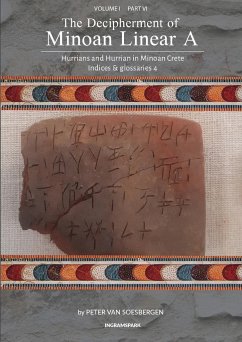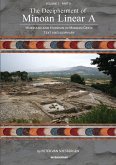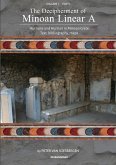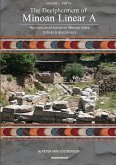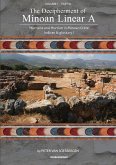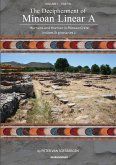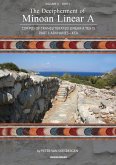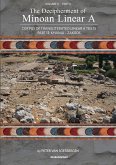A photograph of Linear A tablet KH 5 from X¿¿¿¿ / Khaniá is on the front-cover. KH 5.1-2: a-da-ki-si-ka , a-ra-u- da , KH 5.2: wi-sa-sa-ne HORD+E 2 VINb+9 2 KH 5.3: wi-na-du , OVIS+na 1 KH 5.3-4: ku-pa-do HORD [ ] 5 A FIC 2 JB Linear A a-da-ki-si-ka (KH 5.1) represents a Hurrian name, for it can be analysed as äd=a-kizzi=¿¿(i)=a, consisting of the a-stem äd=a 'woman' and the essive -a of kizzi=¿(¿)i 'jewel', so that it can be translated as 'The woman (is/shines) like a jewel' or more specifically 'The woman (is/shines) like a hairpin of precious metal', if we take into account that kizzi/u¿u at Qäna is the designation of a golden pin and that Linear A ja-ki-si-ki-nu (AK Zf 9) is written on a silver hairpin from Arkhanes, that can be analysed as ya-kizz=i=¿¿i=nnu 'as it is a jewel'. The second sequence a-ra-u- da (KH 5.1-2) is a Hurrian 'one-word' name or a toponym Arau, with directive suffix -da 'to, for', or ablative suffix -dan 'from'. The name Arau (wr. A-ra-ú), analysis ar=av, 'I give (the boy)', is attested at Old Babylonian Sippar (Dekiere 6, 917 Beischrift). Linear A wi-sa-sa-ne (KH 5.2) may well consist of the name of the mountain Wi¿äa / Wi¿ai¿a + the alternative Hurrian ethnic suffix -n(n)i/e, 'The one of (Mount) Wi¿äa'. Linear A wi-na-du (KH 5.3) may be interpreted as the Hurrian sentence-name P/Win-ädu, analysed as p/win-ädu and be translated 'Lift (the child), oh woman !', 'Pick (the child) up, oh woman !'. Linear A ku-pa-do (KH 5.3) can be analysed as an Old Hurrian verbal 'one-word' name ¿ub=ad=o=m, with root-extension -ad- of unknown meaning, 'He/She (a numen) destroyed (the deceased child)' or as an Old Hurrian imperative ¿ub=ad=o 'Destroy (the deceased child) (oh numen) !'.
Hinweis: Dieser Artikel kann nur an eine deutsche Lieferadresse ausgeliefert werden.
Hinweis: Dieser Artikel kann nur an eine deutsche Lieferadresse ausgeliefert werden.

